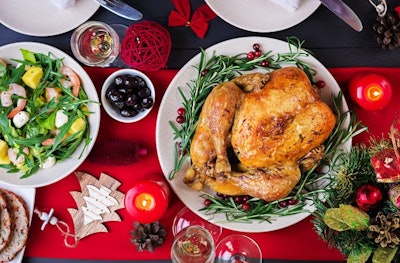
Thanksgiving and Christmas are marked by large gatherings, but there will be a sharp break from that tradition in 2020 as health officials discourage large gatherings to help limit the spread of COVID.
Industry stakeholders are left wondering what kind of impact this will have on whole turkey sales this holiday season if consumers choose smaller birds than usual.
Tight supply boosts wholesale markets
Frozen whole turkey prices are strong overall in 2020. From early January 2020 through mid-October 2020, frozen 8- to 16-pound hens averaged $1.054 per pound on a spot wholesale basis according to U.S. Department of Agriculture (USDA)’s Agricultural Marketing Service. That represented a 20% increase from average price levels ($0.877 per pound) during the same time period in 2019.

Frozen 8-to-16 pound hen prices averaged $1.054/lb from January through mid-October of 2020 according to the USDA. That marked a 20% increase from the same time period in 2019.
This is reflective of tight supply conditions, however, and not necessarily due to strong demand. In 2020, domestic per capita availability of all turkey meat (which includes cut-up parts and further-processed products) is poised to reach its lowest point since 1987. Isolating the whole turkey component of that total, per capita supply levels in 2020 are smaller than at any point in nearly four decades.
Retailers shoulder the burden
Retailers are forced into a challenging position. Limited availability of whole turkeys coming into the holiday season lifted their cost basis, and they are trying to sell birds to a reticent public. Toss in the uncertainty around how consumers react to meeting in smaller groups and what this might do to meal-planning and retailers are left walking a tightrope.
If whole turkeys aren’t priced attractively enough, there will be a strong incentive for alternatives appropriately sized for smaller groups. That would likely boost sales of bone-in, whole turkey breasts as well as certain products from other protein categories, but it would lead to weak whole turkey sales and bloated inventories carrying over into 2021.
On the other hand, retailers can probably entice even reluctant consumers into buying a whole turkey for their holiday gatherings at the right price. They will choose between product movement and margin. However, the retail sector is accustomed to using whole turkeys as a loss-leader.
There is a good chance retailers opt for movement over margin, recognizing it will be even more difficult to sell those birds if they’re still around this winter.















